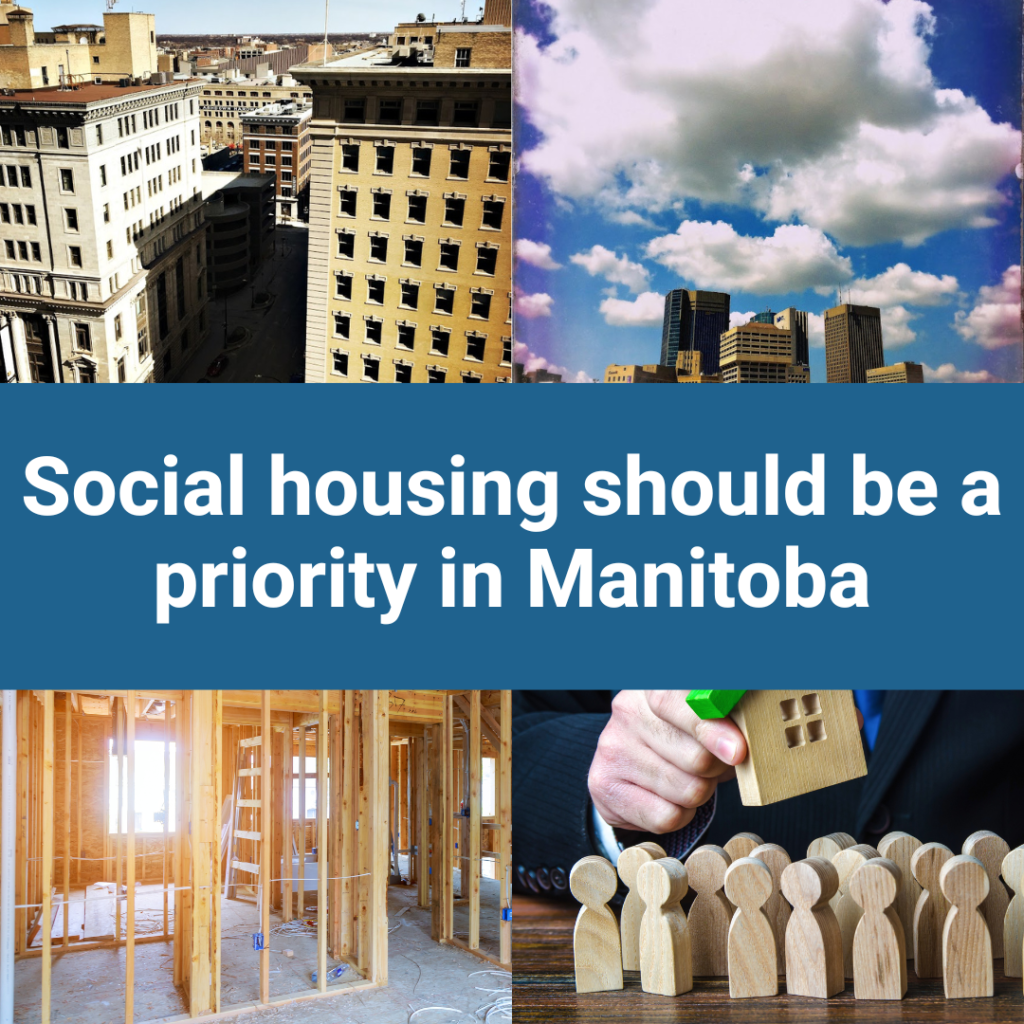
By Shauna MacKinnon
Previously published in the Winnipeg Free Press January 29, 2024
The NDP government recently announced its plans to scale back the previousgovernment’s promise to expand social housing by adding 700 units this fiscal year. Instead, it will focus on providing up to 250 rental units with supports, for people currently unhoused.
It is typical for governments to make grand announcements on their way out of government that are then rejected by the incoming government. It doesn’t always make sense to do so. Although the government changed, the need for major investment in housing remains. The NDP government knows this. When in opposition, the NDP understood that the housing crisis requires large-scale public investment. It rightly criticized the Conservative government for reversing progress made under the Selinger government, which fulfilled its modest commitment to increase the supply of social housing units and increase the maintenance and improvement budget. The Pallister government chose another route, guided by a highly contested 2017 KPMG report which made the case for the privatization of Manitoba’s social housing stock. The
Conservative government began selling Manitoba Housing and reduced the maintenance and improvement budget. Although housing advocates welcomed the Stefanson government’s homelessness strategy that promised to add 700 social housing units in 2023/24, it was far too little too late after seven years of austerity.
For close to 20 years, the Right to Housing Coalition has called for significant public investments to expand and maintain the supply of social housing. That is public and non-profit-owned housing with rents set at no more than 30% of household income. In In 2023, the Coalition released its Social Housing Action Plan for Manitoba. It cites examples of jurisdictions doing a better job, including Finland, which points to its “constant policy of providing affordable, social housing” as the cornerstone of its success.
Sadly, the shortage of rental housing across Canada has only worsened because governments have not been willing to invest in social housing. Problems began in the 1990s when the federal government reduced funding for social housing and devolved responsibility to the provinces. Provinces turned to the private sector to create housing for low-income households. A large body of evidence now tells us that private-sector solutions have not worked. Yet governments continue to look to the private market for a cheaper solution, despite the private sector telling us that housing and supports for low-income households is a government responsibility.
Yes, expanding and adequately supporting social housing and tenants is expensive—at least in the short term —and it is getting more expensive each year that passes. But as demonstrated by Finland, a country that has tackled homelessness like no other, investment pays off in the long term. They know that without safe, stable housing, people are at higher risk of having poor mental and physical health, poor education outcomes, weaker labour market attachment and a host of other issues. Finland has recognized that ending homelessness and the social and economic impacts associated with homelessness begins with prevention, and that means more focused attention on housing (not shelters) with comprehensive support attached.
This month, the Manitoba government reiterated the Premier’s commitment to ending
chronic homelessness and creating affordable housing throughout Manitoba. Indeed, addressing the immediate need to get people off the streets and into housing, even if it is temporary, is critical. But this won’t address the needs of thousands of Manitobans living in unaffordable housing and at risk of homelessness. A large and sustained investment in non market housing is the only solution that can make up for decades of neglect.
Solving the housing crisis will require leadership and broad political support. The case of Finland makes that clear. Investing in social housing has become a norm in Finland that survives changes in government. In Canada, governments of all stripes and at all levels have failed to fix housing. People no longer care what the previous Manitoba government did and did not do. They want a new norm to be set by the current government that says it is committed to ending chronic homelessness and addressing the dire need for social housing.
A government spokesperson has said the NDP government is “still committed to building the 700 units” promised by the previous government. Manitoba social housing advocates have been clear that a minimum 1000 units annually are needed annually. The 2024 budget will be the litmus test of the NDP government’s commitment to social housing. The good news is that all levels of government are desperately trying to respond to increasing pressure to address the crisis, presenting the potential to leverage federal and municipal support for a long-term social housing plan.
Shauna MacKinnon is Professor and Chair of the University of Winnipeg Department of Urban and Inner-City Studies, a member of the Manitoba Right to Housing Coalition and a research associate with the Canadian Centre for Policy Alternatives.


